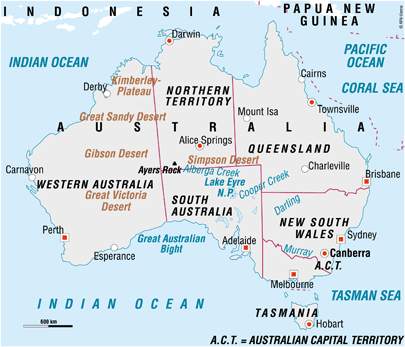SOS relies on the kindness and generosity of Canadians to be able to provide a home for the most vulnerable children around the world.
By becoming a child sponsor you are helping an individual child in need.
(You will receive a Canadian charitable tax receipt)
Please help us ensure a loving home for every Australian child. Sponsor a child in Australia now.
For just $36/month you can sponsor a child and help provide an orphaned or abandoned child with:
- A safe and nurturing home
- A loving SOS mother
- Quality education
- Healthcare
- Nutritious food
- Clothing and toys
- All the things necessary for a bright future
SOS Children's Villages in Australia
Since the closure of SOS Children's Village Seaford Rise, SOS Children's Villages Australia has a new mission statement: "Protection, Security, and a Future for Every Child", with a focus on advocating for a change in state and federal child protection systems. More recently, plans have been approved by the Board of SOS Australia to open up a new programme in Adelaide.

Some facts about Australia
The Commonwealth of Australia is the smallest continent in the world, but the sixth largest country by total area. It is located south-east of Asia, bound by the Pacific Ocean to the east, the Coral Sea to the north-east, the Timor Sea to the north-west, the Indian Ocean to the west and the Tasman Sea to the south-east. Australia's external territories include Norfolk Island, Christmas Island, Cocos (Keeling) Islands, Ashmore and Cartier Islands, Coral Sea Islands Territory, Heard Island and McDonald Islands Territory and Australian Antarctic Territory. The island state of Tasmania (67,800 km²) also belongs to the Commonwealth of Australia.
The population is 21.7 million (July 2011 est.). The capital is Canberra, where around 385,000 people live, and Sydney with over four million inhabitants is the biggest city.
Around a fifth of the population was born overseas; the majority of people are British or Irish in origin. The indigenous Aboriginal and Torres Strait Islander population accounts for 2.2 per cent of the population. In 2008, the government apologised for the maltreatment of the community in the past. Aborigines still suffer from high rates of imprisonment, unemployment and drug abuse.
They also have a lower life expectancy rate than the non-indigenous population.
A high standard of living but increasing inequality
The people of Australia enjoy a high standard of living. In international comparisons, Australia ranks among the top countries regarding quality of life. Australians have access to high quality education and health care. The country has one of the highest life expectancies in the world - 79.4 years for men and 84.3 years for women.
The Australian economy has grown in the recent past, even during the 2008-2009 global crisis, albeit at a slower rate. Over 70 per cent of the population works in services, including education, banking and tourism. Industry employs about a quarter of the population. The chief industries include mining and textiles. Around 3.9 per cent work in agriculture: the main agricultural products are wheat and wool. The production of wine for export has become increasingly important. The unemployment rate peaked at 5.7 per cent in late 2009.
However, not everyone benefits from the high standard of living in the country. In recent decades there has been an increase in wealth inequality. The Australian Council of Social Services concluded that 2.2 million Australians were living in poverty, defined as surviving on an income that was half the median disposable earnings of Australian households. Poverty mostly affects indigenous Australians, single adults (especially those over 65), single-parent households, disabled people, and some groups of immigrants. People who are unemployed or on social benefits are also among the poor - an Organisation for Economic Cooperation and Development (OECD) Economic Survey carried out in 2010, recommended that the social benefit levels should be increased to help people escape the poverty trap.
Situation of the children in Australia
Around 18.3 per cent of the population of Australia is under the age of 14. Most Australian children have benefited from the high quality of life in the country; they have access to good health care and an education system which scores highly in the Programme for International Student Assessment evaluations.
However, according to the UNICEF report on poverty, one in seven Australian children is poor. Poverty brings with it other disadvantages: most children who are in need of protection come from households with low incomes. Poor households run a higher risk of becoming homeless - housing costs are high and the availability of adequate accommodation is limited.
Our Impact
Image

SOS Social Centres in Australia aim is to help families, in particular women and children, living in communities neighbouring the SOS Children's Villages to gradually escape from poverty, and to help young people become self-reliant. |
1 SOCIAL CENTRES | 172 Beneficiaries |
Our Impact


